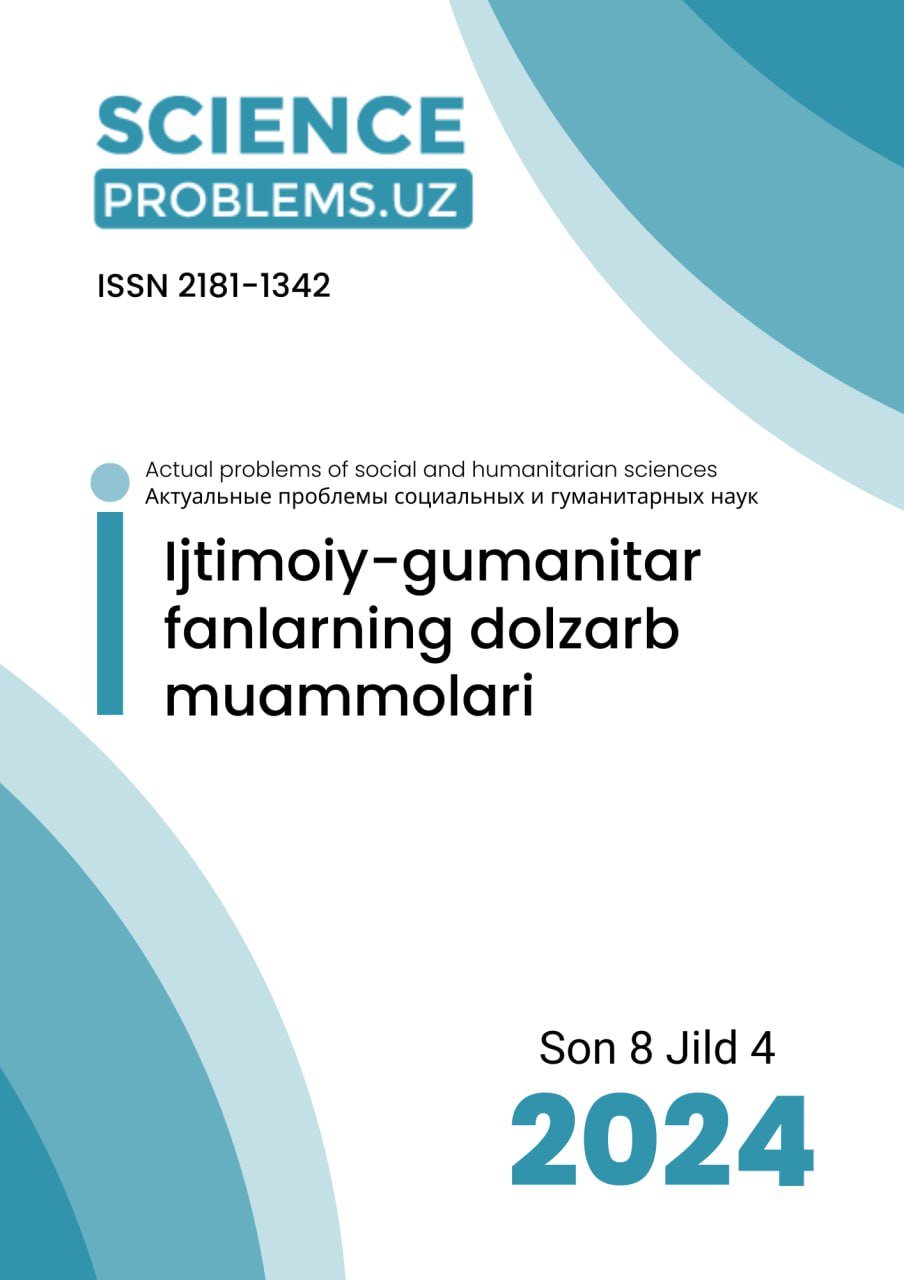PERFECTION OF IDEOLOGICAL AND ARTISTIC EXPRESSION IN THE NARRATION OF HADITHS IN ALISHER NAVOI'S WORK "ARBA'IN"
DOI:
https://doi.org/10.47390/SPR1342V4I8Y2024N41Keywords:
hadith, verse, content, poetic expression, artistic idea, scientific wisdom, form, meaning, harmony.Abstract
Alisher Navoi, with his rich literary heritage and generous morals, is a figure of special attention not only among the Turkic peoples, but also among the entire humanity. Nizamiddin Mir Alisher is a great scholar who propagated the idea of a perfect human being in the core of all his works and painted his image and character. The same can be said about the religious and mystical works of the author. The hadiths, which are the source for Hazrat Nawai's work "Arba'in", are primarily aimed at the education of a perfect human personality, the main idea characteristic of the entire work of the thinker according to its content and essence. , the Sunnat, which speaks about the criteria of humanity, is the Prophet. In "Arba'in" the author does not give the exact text of the hadiths, not the sanad part, but only the text, he does not give the exact Turkish translation in the poem, but he tries to interpret the meaning and essence of each hadith, to artistically reveal the meaning of knowledge and wisdom in it, and to present it to the reader. tries to fly. Therefore, the text of hadiths is reflected in different forms in poetic fragments, but the poet skillfully achieves a harmony of form and content in each continent, so that as a result, the content of the hadith is not damaged, on the contrary, its essence is revealed more deeply, its meaning is brighter. becomes clearer, more deeply understood, the effectiveness increases several times. This article analyzes several examples of this process.
References
1. Alisher Navoiy. To‘la asarlar to‘plami. 10 jildlik. 10-jild. Arba’in. Toshkent, 2011.
2. Alisher Navoiy asarlarining izohli lug‘ati. 4 tomlik. 1-4-tomlar. – Toshkent, “FAN” nashriyoti, 1983-1985-yillar.
3. “Arba’in”ning nasriy bayoni va taxriji. Hasanxon Yahyo Abdulmajid, Husaynxon Yahyo Abdulmajid. - islom.uz
4. Abu Abdulloh Muhammad ibn Ismoil al-Buxoriy. Al-jomi' as-sahih. (1-jild). Arabchadan Zokirjon Ismoil tarjimasi. – Toshkent, 1991.
5. Pulatova Malohat. Hadislarda axloqiy qarashlar. /“Zamonaviy oilada, farzand tarbiyasida milliy va umuminsoniy qadriyatlarni shakllantirish masalalari” mavzusidagi respublika ilmiy-amaliy anjumani materiallari to‘plami. 30-sentabr, 2021-yil.
6. Бадиий адабиёт ва тасаввуф тимсоллари. – Тошкент, 2010.
7. Qur’oni karim ma’nolari tarjimasi. Tarjimon va izohlar muallifi: Abdulaziz Mansur. - www.ziyouz.com кутубхонаси.








